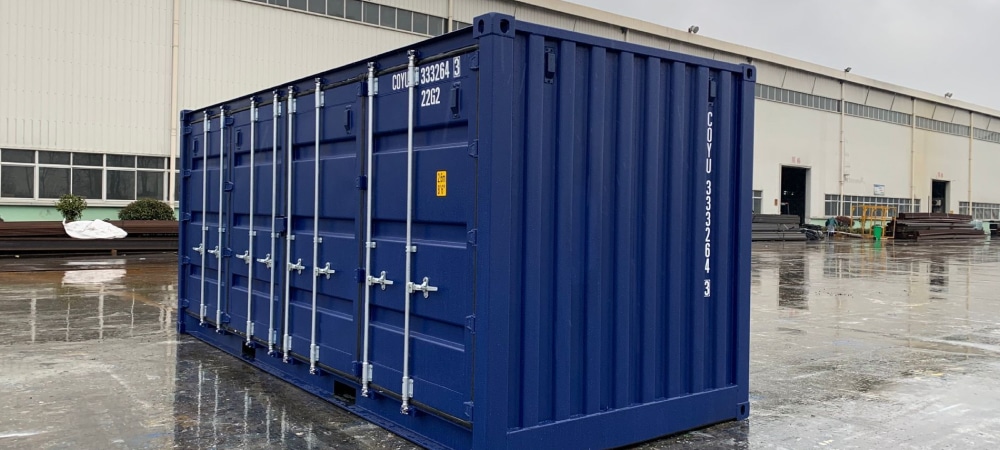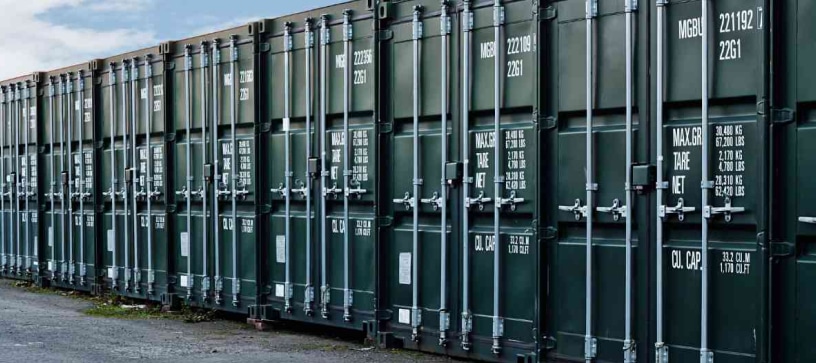Shipping Container Marking and Numbers Explained
When you look at the doors of a shipping container, you will notice various numbers and letters. These markings each signify important information about the transportation, cargo, ownership, and condition of the storage container, ensuring users have all the necessary details about the unit. In this guide, we’ll explore the meaning of each number, letter, and marking so you can easily understand their significance.
Alpha Prefix
The alpha prefix is the first marking you will find on the top right container door. It refers to the combination of two important markings: the owner prefix code and the equipment category identifier.
This prefix, along with all other markings on the container, must be printed clearly and legibly in a color that contrasts with the container’s paint.
Owner Prefix Code
The owner prefix is the first marking in the alpha prefix. This code is three capital letters indicating the owner or operator of the unit.
Equipment Category Identifier
Immediately following the owner prefix code is the equipment category identifier. This capital letter falls into one of the following three categories:
- U: Freight container
- J: Attached or detachable container-related equipment
- Z: Trailer or chassis
Serial Number
On the same line as the alpha prefix is the serial number, a 6-digit number chosen by the owner. This unique code allows the owner to easily keep track of each container and differentiate them easily.
Check Digit
The last marking on the first line is the check digit, which is displayed inside a rectangle. This single number verifies that the entire identification sequence is accurate. When the container number is searched with the Bureau of International Containers, the matching check digit will appear. According to the BIC, this provides “a means of validating the recording and transmission accuracies of the owner code and serial number.”

ISO Code
Below the container number, you will find the ISO size and type code, a sequence of four letters or digits that provide information about the container’s dimensions and the type of container. The meaning of these numbers and letters is as follows:
- First character: Container length
- Second character: Container width and height
- Third and fourth characters: Container type
- G1 – General Purpose Container
- R1 – Refrigerated Container
- U1 – Open Top Container
- P1 – Platform Container
- T1 – Tank Container
Repair Recommendation
When looking at the left door of a container, you will find a repair recommendation symbol if applicable. This is denoted with an upside-down triangle, which provides details on any repairs or maintenance for the container.
Operational Markings
Underneath the ISO size and type code, users will find the operational markings, a category that covers valuable information about the container’s capacity. These markings are displayed in both pounds and kilograms OR cubic meters and cubic feet, as applicable.
Maximum Gross Weight
The maximum gross weight is the first operational marking. It shares the maximum weight of a loaded container.
Tare Weight
Next, you will find the tare weight below the maximum gross weight. Tare weight displays the weight of the container when empty.
Maximum Payload
The maximum payload, sometimes referred to as the net weight, is the gross weight minus the tare weight. This is the maximum weight of the contents that can be loaded into the container.
Capacity
The container’s cubic capacity is the maximum cargo volume. Similar to the maximum payload, this is the maximum amount that can be placed within the container, in volume rather than weight. This is denoted in cubic meters and cubic feet.
Height Warning
The final operational marking is the height warning. This mark reads, “Caution High Trailer,” and appears on containers higher than 2.6 meters or 8.5 feet. The height warning is shown on the top edge of each of the container’s sides and below the operational markings.
CSC Plate
Lastly, you will find the CSC plate on the lower left door. The CSC, or the International Convention for Safe Containers, plate has been a requirement on shipping containers since 1972. It is riveted to the container and verifies that the container is in the appropriate condition for overseas travel.
The most noticeable marking on the plate is “CSC SAFETY APPROVAL.” The plate includes important information such as the manufacturer’s name, date of manufacture, manufacturer’s serial number, owner’s container number, and the owner’s name and address.
Understand Your Shipping Container’s Markings
Understanding your shipping container’s markings allows you to operate responsibly and easily ascertain the information you need. With this knowledge, you can confidently find solutions for your shipping containers.
Looking for a trusted shipping container provider? Count on Container Technology, Atlanta’s top-rated storage container provider since 1988. We deliver a wide range of new and used shipping containers of various sizes and specifications, along with modifications that allow your business to make the most of your container. Our team of professionals will help you every step of the way to ensure a smooth process from purchase to delivery. Request a free quote online or call us today to learn more about our products.








